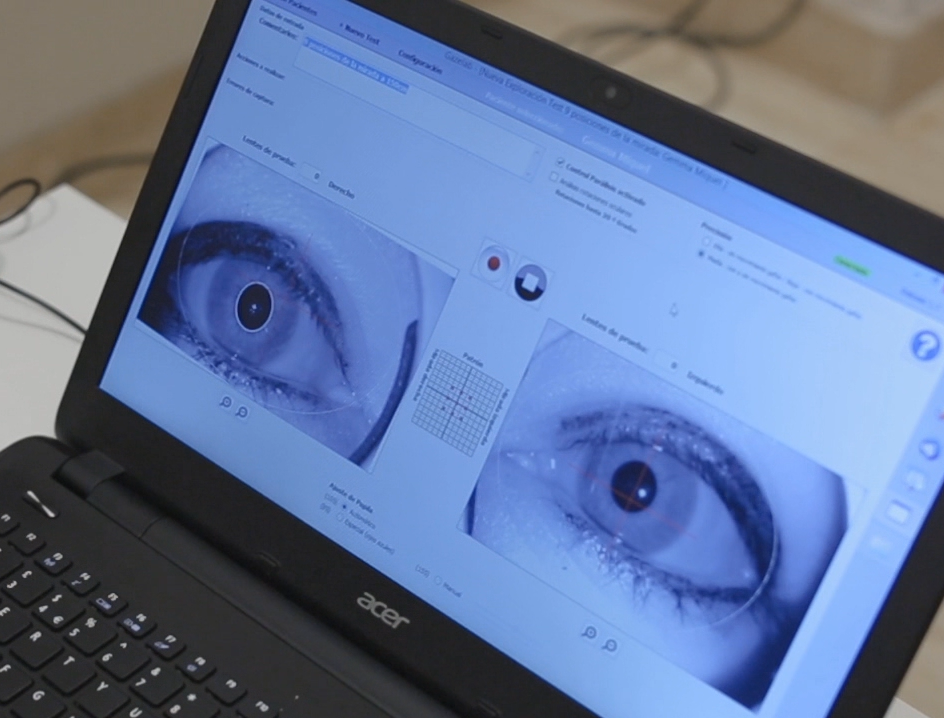Neuro-ophthalmology
What is neuro-ophthalmology?
Neuro-ophthalmology is a medical speciality that deals with the study of eye conditions that are secondary to problems in the nervous system.
The eye is connected to the brain via several pairs of cranial nerves, and the visual pathway runs right through the brain from one end to the other. This means that in many cases, neurological and brain disorders manifest themselves visually.
Types of neuro-ophthalmologic disorders
Optic neuritis: An inflammation of the optic nerve that generally produces an abrupt and unilateral loss of vision. There are several possible causes, but the biggest one is demyelination, which can be associated with multiple sclerosis.
Migraine auras: Migraines can cause a number of alterations in vision (including scintillating scotoma and altered perception of objects), which are normally temporary and generally occur before the onset of the headache itself.
Anterior Ischemic Optic Neuropathy (AION): This condition affects the anterior part of the optic nerve (visible in a dilated fundus exam). It causes an inflammation of the head of the optic nerve due to a lack of blood supply (ischemia). There are two types of AION:
- Non-arteritic, or NAION: This condition produces sudden and non-painful loss of vision, usually in people with cardiovascular risk factors (hypertension, diabetes mellitus).
- Arteritic, or AAION: This condition is associated with temporal arteritis, although it normally occurs in older people. This type is painful and more dangerous, as the risk of it spreading to the other eye is very high if it is not treated urgently.
Papilledema: This condition is an oedema, or swelling of the optic nerves, secondary to an increase in intracranial pressure that may be caused by a brain tumour, infection, thrombosis or certain toxic substances.
Diplopia: Diplopia is the perception of “double vision” when looking at a certain object. It is usually caused by strabismus (see relevant section) or by damage to some of the related nerves and muscles (such as in myasthenia gravis or ischemia).
Specific alterations to the visual field: Certain diseases cause specific patterns of alterations in the visual field, corresponding to specific damage in the optical path from the optic nerve head to its arrival point in the brain (the visual cortex).
Pupillary abnormalities: Abnormalities in pupil symmetry and response to light, which can occur as a result of problems in the oculomotor nerve, taking certain medication, or as a consequence of a tumour pathology (Horner’s syndrome).
Evaluation
Diagnostic techniques for studying neuro-ophthalmological conditions
- Best-corrected visual acuity.
- Colour blindness tests (Ishihara test, Farnsworth test).
- Contrast sensitivity test.
- Pupillary response assessment.
- Ocular motility examination.
Technological instruments
- Fundus examination.
- Visual field test (computerised campimetry)
- Nystagmus study with Gazelab video-oculography.
- External tests:
- Electrophysiological studies: visual evoked potentials.
- Imaging tests: computed tomography (CT), cranial nuclear magnetic resonance (NMR).
OTHER SPECIALITIES
Frequently Asked Questions
It can indeed, and in fact there is a name for these conditions: thyroid ophthalmopathy. They include a retraction of the eyelids (a “frightened” look), exophthalmos or “bulging eyes”, ocular motility problems and some visual alterations such as eye pain, lacrimation, double vision or altered colour perception.
There are several possible causes of one pupil being bigger than the other, which range from totally physiological problems to a neuronal issue. If you are at all unsure, it is best to get a check-up with an ophthalmologist.
Sudden double vision is always an emergency, especially if it is accompanied by pain or a drooping eyelid, since the possible causes are potentially dangerous diseases.
Related entries
Are migraines with aura an eye condition?
Migraine with aura is essentially a frequent headache that appears at the same time as – or sometimes after –…





